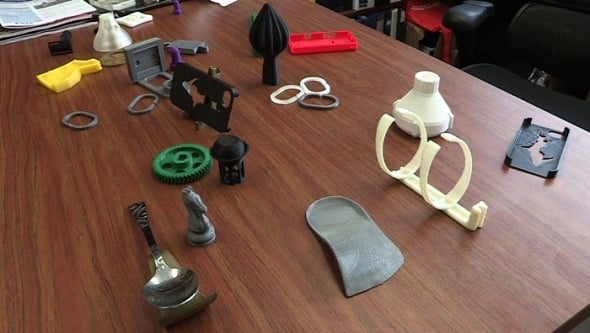Michigan Tech Researcher Claims Personal 3D Printing Could Save Consumers a Bundle Annually
3D printing is an exciting technology to track, in large part because of the implications of a mature 3D printing ecosystem wherein 3D printers are inexpensive enough for the average household to have a good one and there are enough designs out there for people to print whatever they need. Small-scale manufacturing will be revolutionized.
A researcher at Michigan Technological University did a study to determine the financial feasibility of at-home 3D printing versus purchasing products online. They looked at how much it cost to make 20 different products at home using a RepRap 3D printer and designs from Thingiverse, factoring in time spent printing, energy costs, and materials, and compared it to the cost of simply buying items outright. Items in the list include smartphone cases, a garlic press, shower curtain rings, a jewelry organizer, and even more complex and higher-end products such as orthotics.
Joshua Pearce, lead researcher on the project, found that consumers could see an ROI on a RepRap 3D printer of between >200% and >40%. The most astonishing part is one of the charts in the full article (scroll to the bottom) that shows the cost of 3D printing side-by-side with the cost of items at retail. All told, the report states that consumers could save themselves $300 to $2,000 a year using a RepRap to print products at home.
These results are surprising; many people (this writer included) assumed that 3D printing at home is still not all that cost-effective. Between the overhead of buying a printer and keeping the plastic print media around, it seemed the costs would be too high. Assuming Pearce’s results are solid, this is excellent news for tinkerers and enthusiasts who are going to be talking to their significant others today about how an academic paper says that they should buy a RepRap machine to be fiscally responsible.
A researcher at Michigan Technological University did a study to determine the financial feasibility of at-home 3D printing versus purchasing products online. They looked at how much it cost to make 20 different products at home using a RepRap 3D printer and designs from Thingiverse, factoring in time spent printing, energy costs, and materials, and compared it to the cost of simply buying items outright. Items in the list include smartphone cases, a garlic press, shower curtain rings, a jewelry organizer, and even more complex and higher-end products such as orthotics.

Products for the project (Image credit: Michigan Technological University)
Joshua Pearce, lead researcher on the project, found that consumers could see an ROI on a RepRap 3D printer of between >200% and >40%. The most astonishing part is one of the charts in the full article (scroll to the bottom) that shows the cost of 3D printing side-by-side with the cost of items at retail. All told, the report states that consumers could save themselves $300 to $2,000 a year using a RepRap to print products at home.

(Image credit: Michigan Technological University)
These results are surprising; many people (this writer included) assumed that 3D printing at home is still not all that cost-effective. Between the overhead of buying a printer and keeping the plastic print media around, it seemed the costs would be too high. Assuming Pearce’s results are solid, this is excellent news for tinkerers and enthusiasts who are going to be talking to their significant others today about how an academic paper says that they should buy a RepRap machine to be fiscally responsible.

